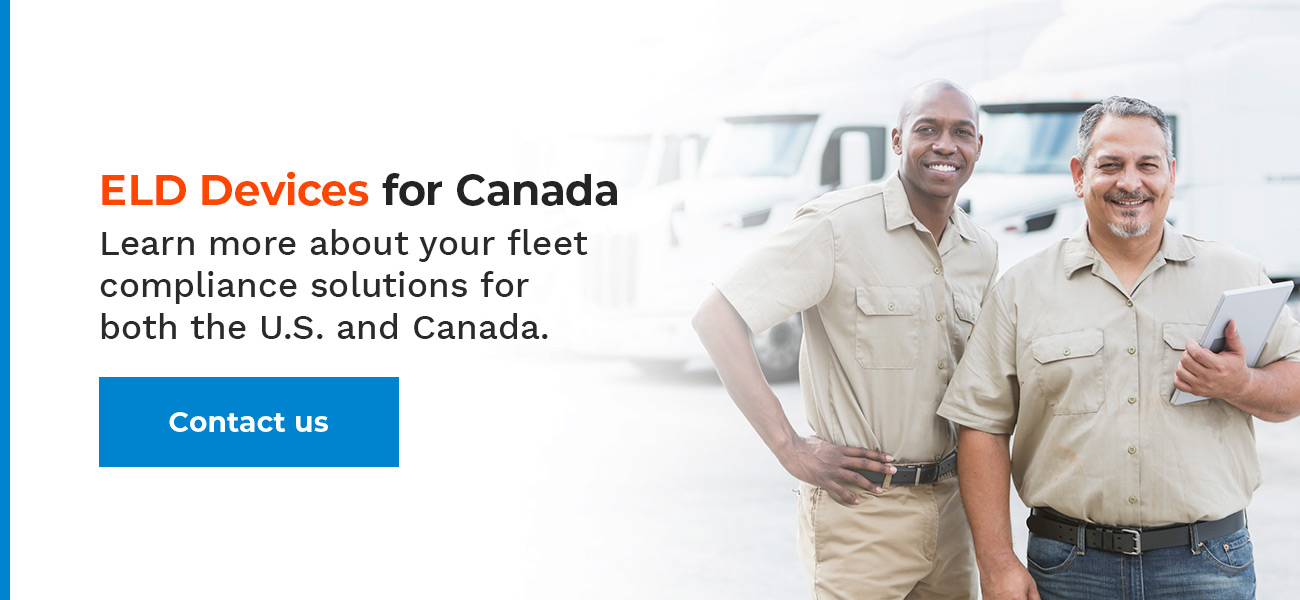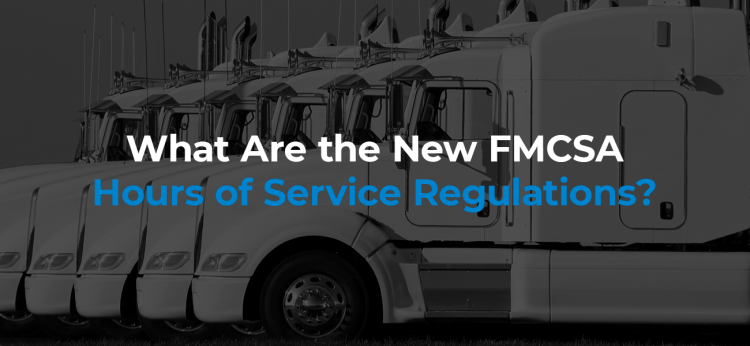What is the Canadian ELD Rule? | 2021 Canada ELD Mandate
When is the Canadian ELD Mandate?
The Canadian ELD mandate went into effect on June 12, 2021. Since then, E-Logs have been required for federally-regulated motor carriers in Canada. Originally the Government of Canada had a progressive enforcement period that ended in June 2022. However, to give industry providers and territories more time, the progressive enforcement period has been extended until January 1, 2023. After this date, drivers will be penalized if they're not using a certified ELD when required to do so.
The "Progressive Enforcement Period"
In the Spring of 2021, citing the unprecedented impact of Covid-19 on the commercial trucking industry, the Canadian government announced that it would move to a "progressive enforcement period" versus enforcing a strict deadline. This was good news for professional drivers who navigate in the Great White North — the progressive period will provide some breathing room for drivers to attain and use Transport Canada certified ELDs without penalty. According to Canada's Minister of Transport, the extension will provide enough time for the industry to obtain and install the ELD devices with no penalty as of January 1st, 2023. Some of the early measures of enforcement will include education and awareness.
The Canada ELD Mandate
The ELD mandate in Canada has been in the works for a number of years — the directive was adopted in 2019 and the effective date was set for June 2021. Similarly to the U.S., the new Canadian E Log rules requires professional truck drivers who record Hours of Service to move from paper logbooks to Electronic Logging Devices. The Canadian ELD mandate doesn't change the existing HOS rules, rather it specifies that drivers use electronic logging versus paper-based tracking.
Who the Mandate Applies to
This mandate will apply to all federally regulated motor carriers and the commercial drivers of buses and trucks. That includes drivers coming from the US. There are, however, a few exemptions for both trucking companies and individual drivers.
Trucking companies are exempt from the Canada ELD mandate if the commercial vehicle in question is operated by a motor carrier with a specific permit, under a rental agreement of 30 days or less, has a statutory exemption or is manufactured before the year 2000. Truckers themselves are also exempt from the ELD mandate if they are making a short haul and do not drive further than 160 kilometers from their home terminal. Volunteer firefighters are also exempt when performing their duties for less than two consecutive hours a day.
There are also several other exemptions for certain types of vehicles:
- Two- or three-axle commercial vehicles or combinations of a two-axle vehicle and one-axle trailer used for transporting products of a farm, forest, lake or sea, as long as the operator is the owner and producer or harvester of the products. They are also exempt on the return journey if the vehicle is empty or transporting supplies and equipment for the farm, forest, lake or sea's production efforts.
- Vehicles used by inspectors on the job.
- Vehicles providing emergency relief or response to a situation that constitutes an imminent danger to life, property or the environment.
- Buses operated by or on behalf of a municipality for public transit within the municipality or within 25 kilometers of its boundary.
- Large cranes and their support vehicles.
Certain companies also have exemptions related to the nature of their business. These companies include the Canadian Pacific Railway and essential freight transportation related to COVID-19 relief efforts.
For a full list of exemptions and conditions, visit the Ontario government's website.
Using U.S. ELDs in Canada
Will it be okay for drivers to use their U.S. compliant ELDs in Canada? The answer is "yes," as long as the U.S. ELD also supports the Canadian ELD rules and is certified in Canada. Thankfully, Canadian regulations allow current U.S. ELD owners to update their devices with the new Canadian ruleset over the air. That is good news for those already using Rand McNally's ELD platforms. Rand McNally devices already have the required software installed for the upcoming January deadline. The Canadian mandate also specifies that ELDs must be verified and certified by an accredited third-party organization, versus the U.S. self-certification model. As a result, ELD vendors, like Rand McNally, have been working with an approved certification body to ensure their software and their devices meet all Canadian standards and requirements. Keep in mind that drivers who routinely cross the border will need to have an ELD certified in both countries.
What's the Difference Between U.S. and Canadian ELD Rules?
There are several key differences between the Canada ELD mandate and the U.S. ELD ruleset in place. As noted above, Canadian regulations require ELDs to be officially certified while devices are self-certified in the U.S. In Canada, when authorities request that drivers transfer their logs, there is no federal Electronic Record of Duty Status (eRODS) system as in the U.S. During a roadside inspection, the Canadian officer will review the ELD display screen or, if available, a print-out, to review the driver's logs. The safety officer also may provide an email address to which the driver can send the electronic records. Beyond the mandate, there are some differences between HOS rules in Canada and those that govern U.S. drivers. The rules stay the same — the method by which the drivers need to log their hours is what changes.
Other areas in which the two differ include:
- Personal Conveyance Rules: Personal conveyance is when a driver is operating a company vehicle for purposes not related to work, such as when driving from their hotel to a gas station. The US does not have time or distance limitations, but Canada does. Drivers are limited to 75 kilometers of personal conveyance travel. ELD devices may enforce this through automation by forcing the driver into "driving" status, which captures the movement as on-duty time.
- Off-Duty Status: Drivers in the US must take 30-minute breaks after driving for a continuous eight hours. These rest breaks are logged as off-duty time. Canada is a little more flexible in this regard, offering a 16-hour period to finish work while dedicating two hours to the off-duty period. It can be broken up in various ways, such as one two-hour break, two single-hour breaks or four 30-minute breaks. Canada also allows drivers to push off-duty time to the following day, while the US requires 30-minute breaks after eight hours.
- Third-Party Certification: While the US allows for self-certification, Canada requires third-party certification of ELD devices.
More Information
For more information and details on the new Canada ELD mandate, check out these FAQs from the Canadian Council of Motor Transport Administrators.
ELD Devices for Canada
Rand McNally works with the approved certification organization to ensure that our ELD devices and software meet all Canadian standards and requirements. If you are interested in learning more about your fleet compliance solutions for both the U.S. and Canada, contact us today.

Contact Rand McNally
Request Pricing for Fleet Solutions
We're looking forward to talking with you. Please fill out the form to get started.
Or call us:
+1 (800) 789-6277 (Fleet management, ELD, Asset tracking, Navigation)
+1 (800) 234-4069 x2 (MileMaker/IntelliRoute)
If you are an existing customer and need assistance, please contact your Client Success rep or email fleetsupport@randmcnally.com.
This form is for business-to-business transactions only. It is not for personal consumer use.

